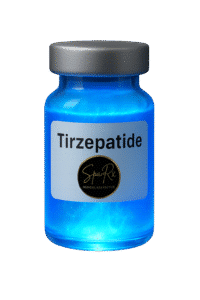Introduction
Tirzepatide is a revolutionary medication for type 2 diabetes and obesity management. By targeting dual incretin receptors, it offers both glycemic control and weight reduction.
This guide provides a comprehensive look at its mechanism, indications, dosage, side effects, and clinical outcomes.
What is Tirzepatide?
Tirzepatide is a synthetic peptide that acts as a dual GIP and GLP-1 receptor agonist. Marketed as Mounjaro and Zepbound, it is FDA-approved for type 2 diabetes and chronic weight management in adults.
- Once-weekly subcutaneous injection
- Dual metabolic benefits: glucose control and weight loss
- Demonstrated superior efficacy compared to some GLP-1 receptor agonists
Example: Clinical trials show patients achieving up to 22% body weight reduction over 72 weeks.
How Tirzepatide Works (Mechanism of Action)
Tirzepatide activates both GIP and GLP-1 receptors to modulate multiple metabolic pathways:
- GIP receptor: Stimulates insulin secretion post-meal
- GLP-1 receptor: Enhances insulin, suppresses glucagon, slows gastric emptying, and reduces appetite
- Improves pancreatic beta-cell function
- Promotes fat mobilization and energy balance
Clinical insight: Dual receptor activation contributes to both weight reduction and glucose lowering, distinguishing tirzepatide from traditional GLP-1 agonists.
Approved Uses
Type 2 Diabetes
- Adults inadequately controlled with diet or oral medications
- Reduces HbA1c up to 2.3%
Weight Management
- BMI ≥30 kg/m² or ≥27 kg/m² with comorbidities
- Average weight loss 15–22% over 72 weeks
Obstructive Sleep Apnea
- Emerging use in obese adults with OSA
- Weight reduction improves sleep metrics
Effectiveness and Clinical Trials
- SURMOUNT-1: Non-diabetic adults with obesity, 22.5% mean weight loss at 72 weeks
- SURPASS-5: T2D adults on insulin, HbA1c reductions 2.2%, mean weight loss 11.3 kg
- Compared with semaglutide, tirzepatide demonstrates superior weight loss and glycemic outcomes
Example: Head-to-head trials show tirzepatide reduces weight by 6–8% more than GLP-1 receptor agonists over 1 year.
Dosage and Administration
- Start: 2.5 mg weekly, subcutaneous injection
- Escalate every 4 weeks until 15 mg weekly, based on tolerance
- Rotate injection sites (abdomen, thigh, upper arm)
- If missed, take within 4 days; otherwise skip and resume next dose
Tip: Slow titration reduces nausea and gastrointestinal side effects.
Side Effects and Safety
Common Side Effects
- Nausea, vomiting, diarrhea
- Decreased appetite, mild abdominal discomfort
- Headache, fatigue
Serious Side Effects
- Thyroid C-cell tumors – contraindicated in medullary thyroid carcinoma or MEN 2
- Pancreatitis
- Hypoglycemia (with insulin or sulfonylureas)
Drug Interactions and Precautions
- Enhances hypoglycemic effect of insulin or sulfonylureas
- Delayed gastric emptying may impact oral medications
- Caution in elderly, renal, or hepatic impairment
- Consult physician during pregnancy or breastfeeding
Cost and Availability
Pricing varies by brand, dosage, and insurance. Mounjaro (diabetes) and Zepbound (weight management) are available via prescription. Manufacturer assistance programs may reduce costs. Not routinely compounded.
Weight Loss Comparison – Tirzepatide vs Semaglutide
50.3 lbs / 20.2%
33.1 lbs / 13.7%
HbA1c Reduction Comparison
- Tirzepatide: 2.01–2.30% (dose-dependent, superior to semaglutide)
- Semaglutide: 1.86%
- Dulaglutide: 1.5–1.8%
FDA Approvals & Indications
- Tirzepatide (Mounjaro): Type 2 Diabetes
- Tirzepatide (Zepbound): Chronic Weight Management, OSA
- Semaglutide (Wegovy): Weight Loss, Type 2 Diabetes, Cardiovascular Risk Reduction
- Semaglutide (Ozempic): Type 2 Diabetes, Kidney Disease Prevention
Conclusion
Tirzepatide offers dual benefits for glucose control and weight management. Comparing it to semaglutide and other GLP-1 receptor agonists highlights its superior efficacy in clinical trials and unique FDA approvals for OSA and chronic weight management. Proper dosing, monitoring, and medical supervision are essential for safe and effective use.



